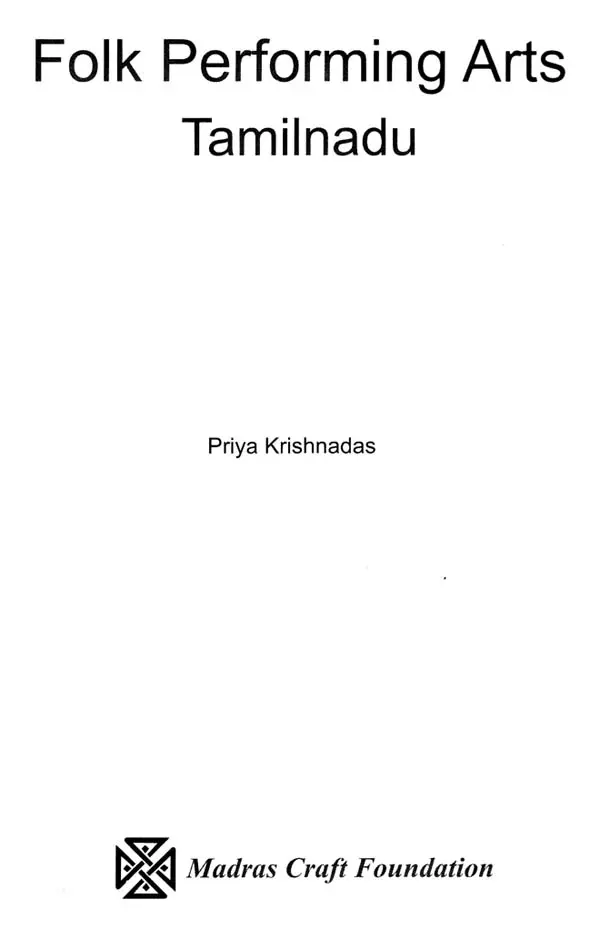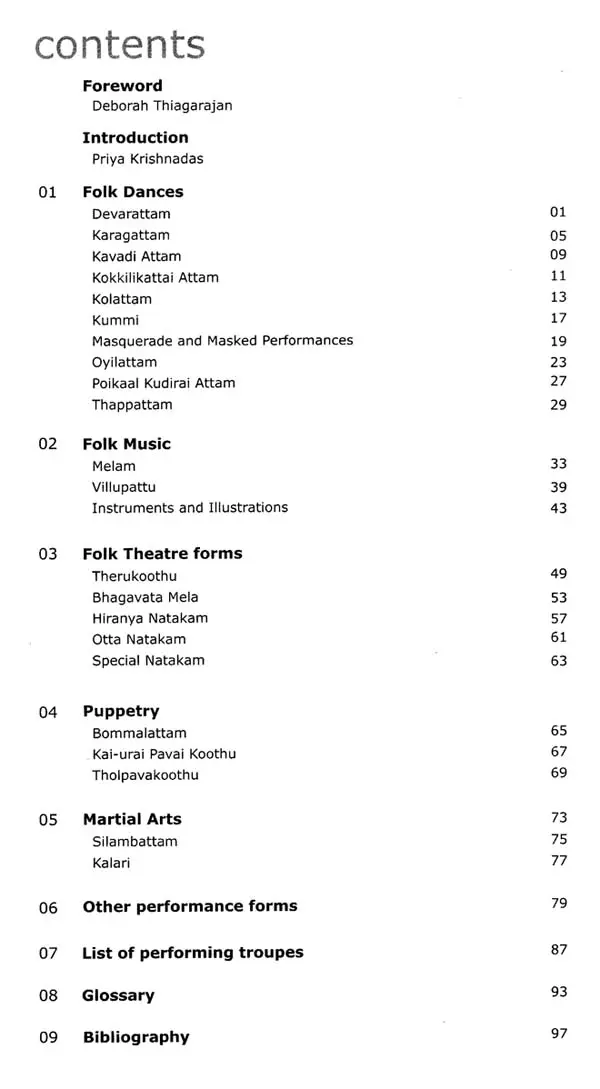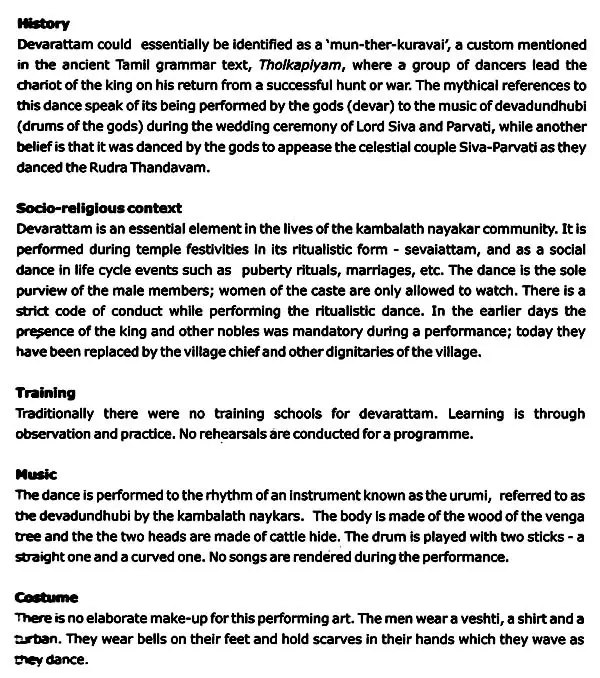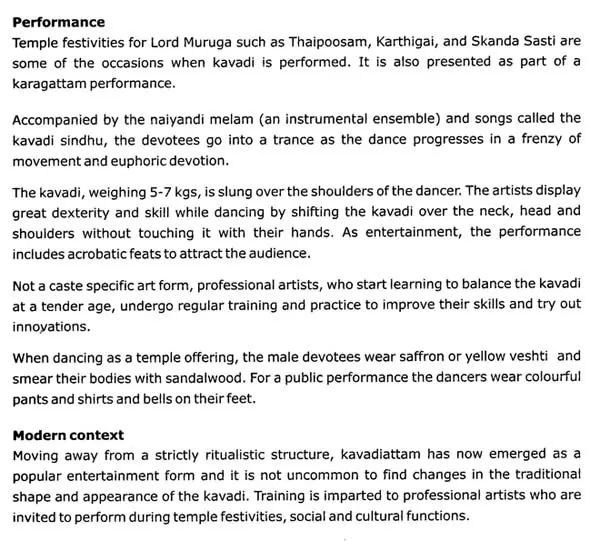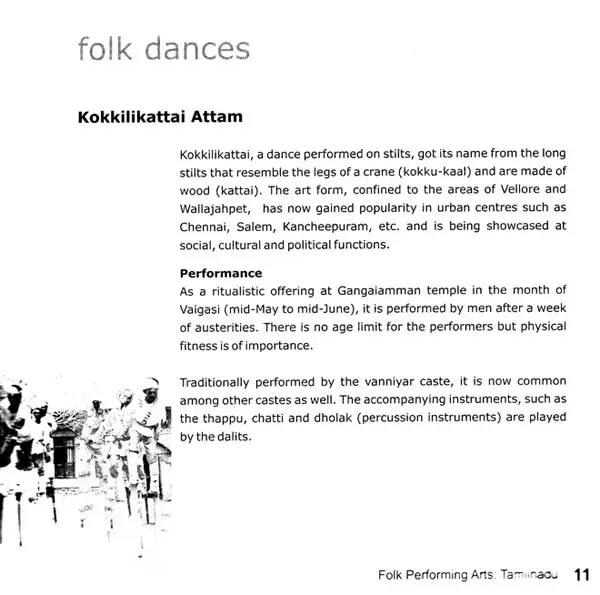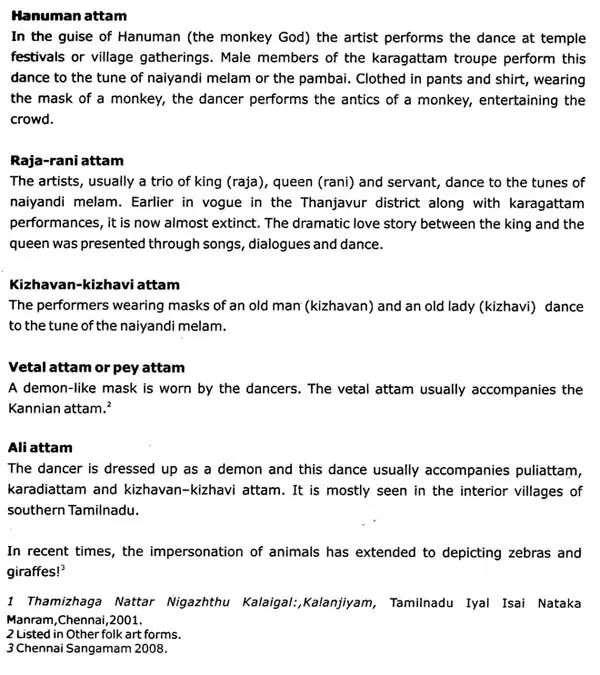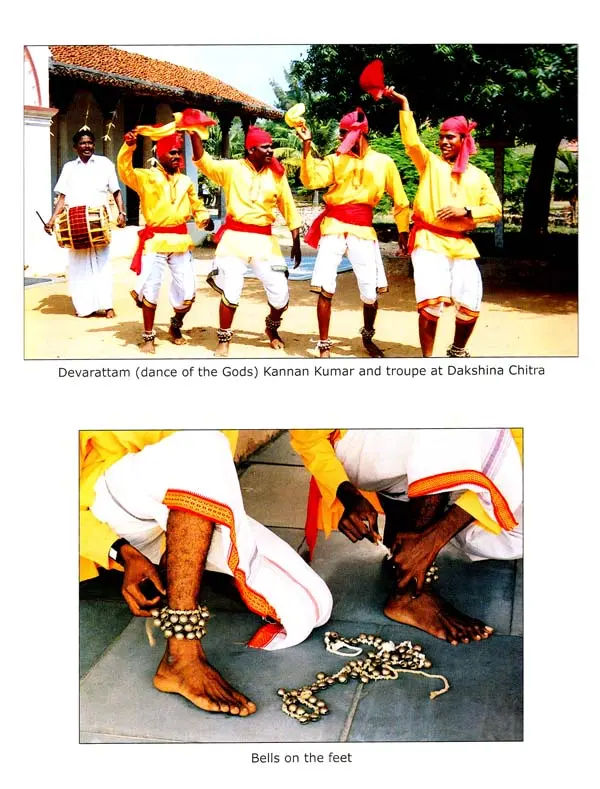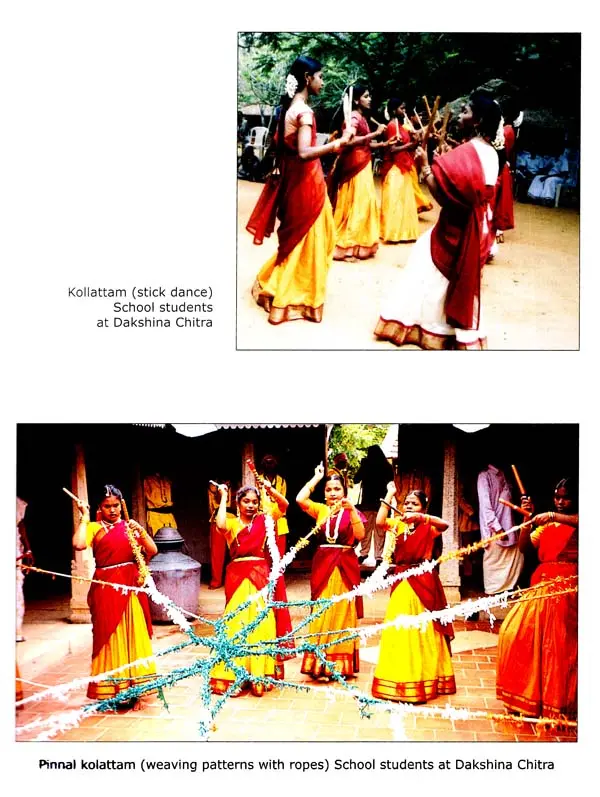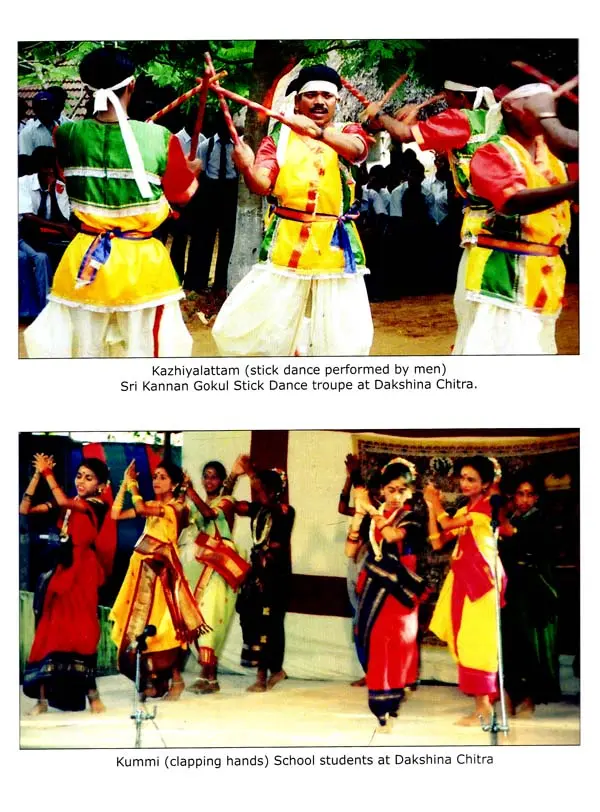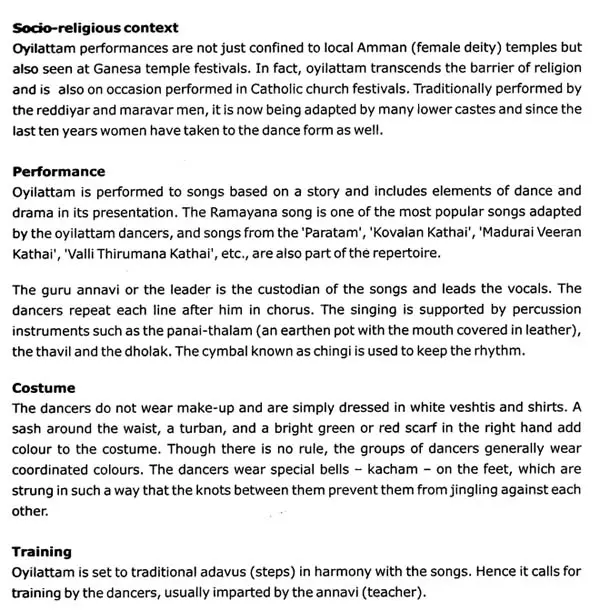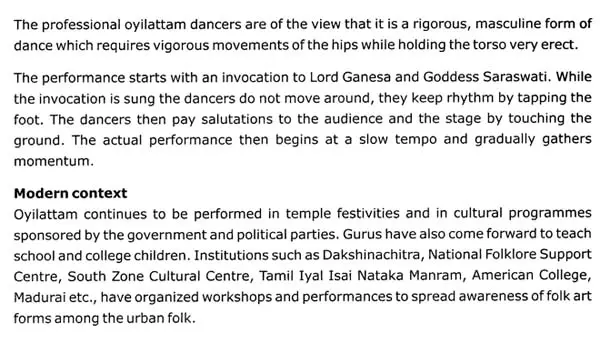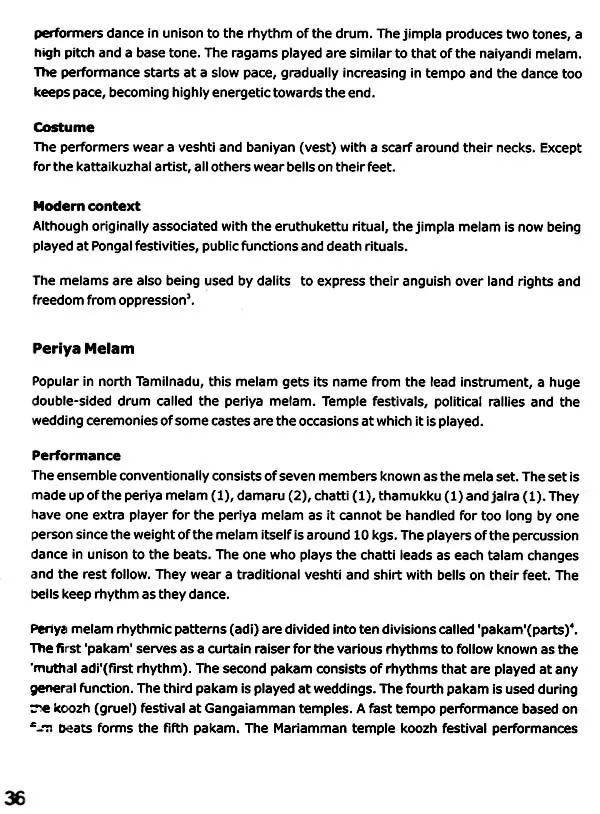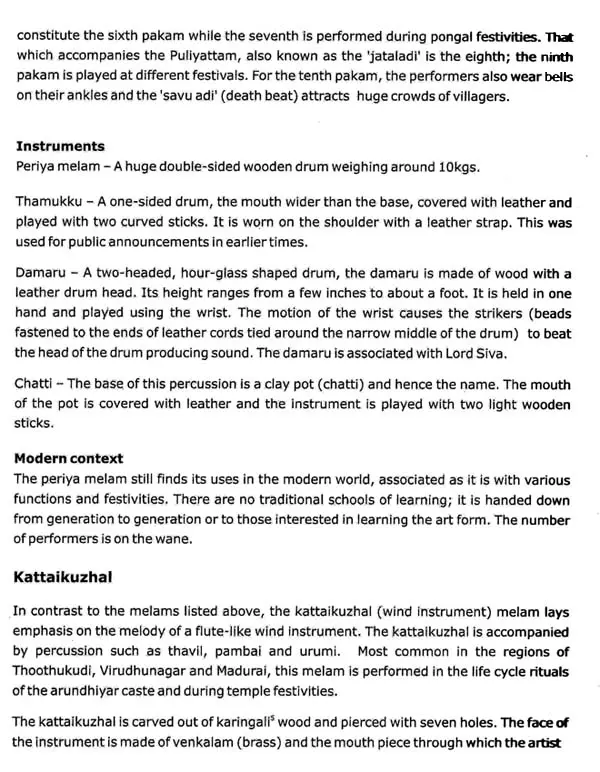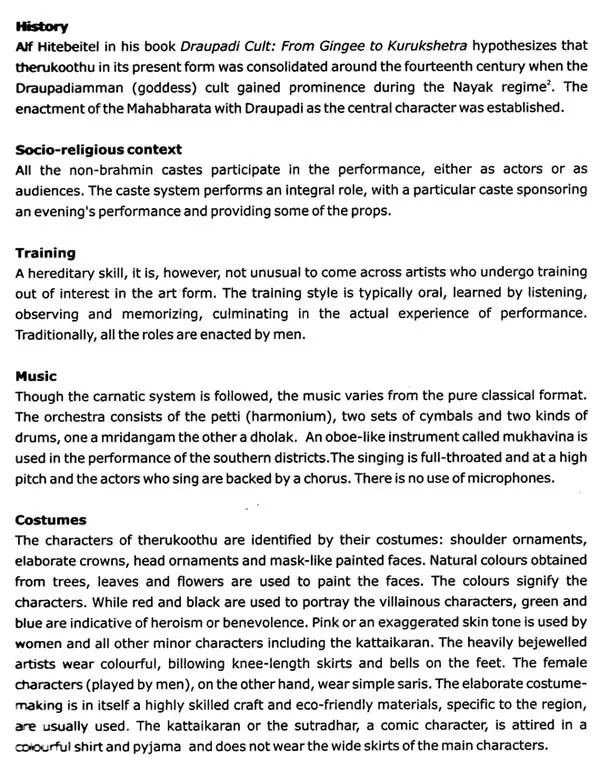
Folk Performing Arts - Tamilnadu
Book Specification
| Item Code: | UBD619 |
| Author: | Priya Krishnadas |
| Publisher: | Madras Craft Foundation, Chennai |
| Language: | English |
| Pages: | 100 (WITH COLOURED ILLUSTRATION) |
| Cover: | PAPERBACK |
| Other Details | 9.50 X 7.30 inch |
| Weight | 290 gm |
Book Description
This small book on the folk performing arts of Tamilnadu is brought out by the Madras Craft Foundation as a tribute to all the folk artists of Tamilnadu. Though by no means comprehensive, it lists some of the troupes who actively perform today. We hope that organisations interested in promoting folk performers will find it useful. For those who wish to read more about folk performing arts a short bibliography is appended.
Historically in Tamilnadu folk performing ensembles have been excluded from Brahmanical Saivite and Vaisnavite temples. Their role was primarily confined to caste-based rituals or rituals and entertainment connected to Amman (female deities) or Murugan temples which are prevalent throughout the state. Some of the roles were hereditary, but all performers had other occupations to give them a livelihood.
World renowned for its classical genre of music and dance - carnatic music and bharatanatyam - Tamilnadu is also home to a rich tradition of folk performances. The cultural heritage of this southern state of India, on the shores of the Bay of Bengal, has been shaped by various powerful dynasties that ruled this land. The Pallavas, Cholas and Pandyas were all great patrons of art, architecture, sculpture, painting and literature; performing arts flourished during their reigns. The Nayaks who ruled from 1529 AD to 1736 AD were great connoisseurs of art besides being artists themselves. During their reign the art forms imbibed influences from Telugu language and culture. Art forms such as devarattam and bhagavata mela became a part of the Tamil cultural milieu. Thanjavur emerged as the cultural capital, a status which it enjoyed through the entire rule of the Marathas. The Marathas surpassed even the Nayaks in encouraging arts and literature. Poi-kaal-kudiral and lavani were two art forms patronised by them.
